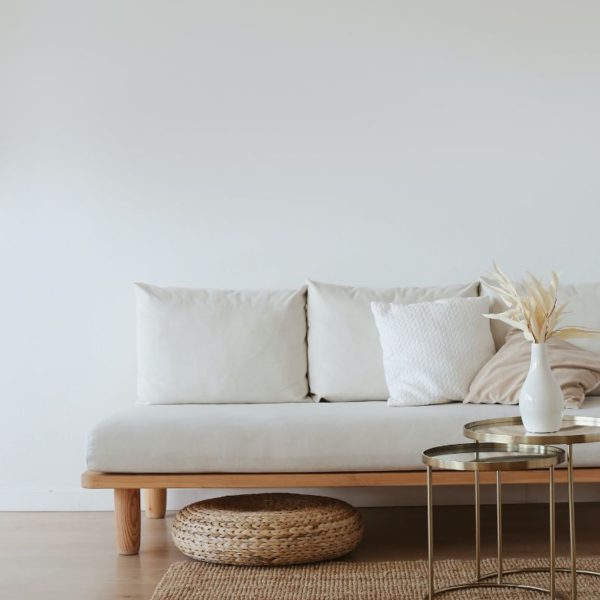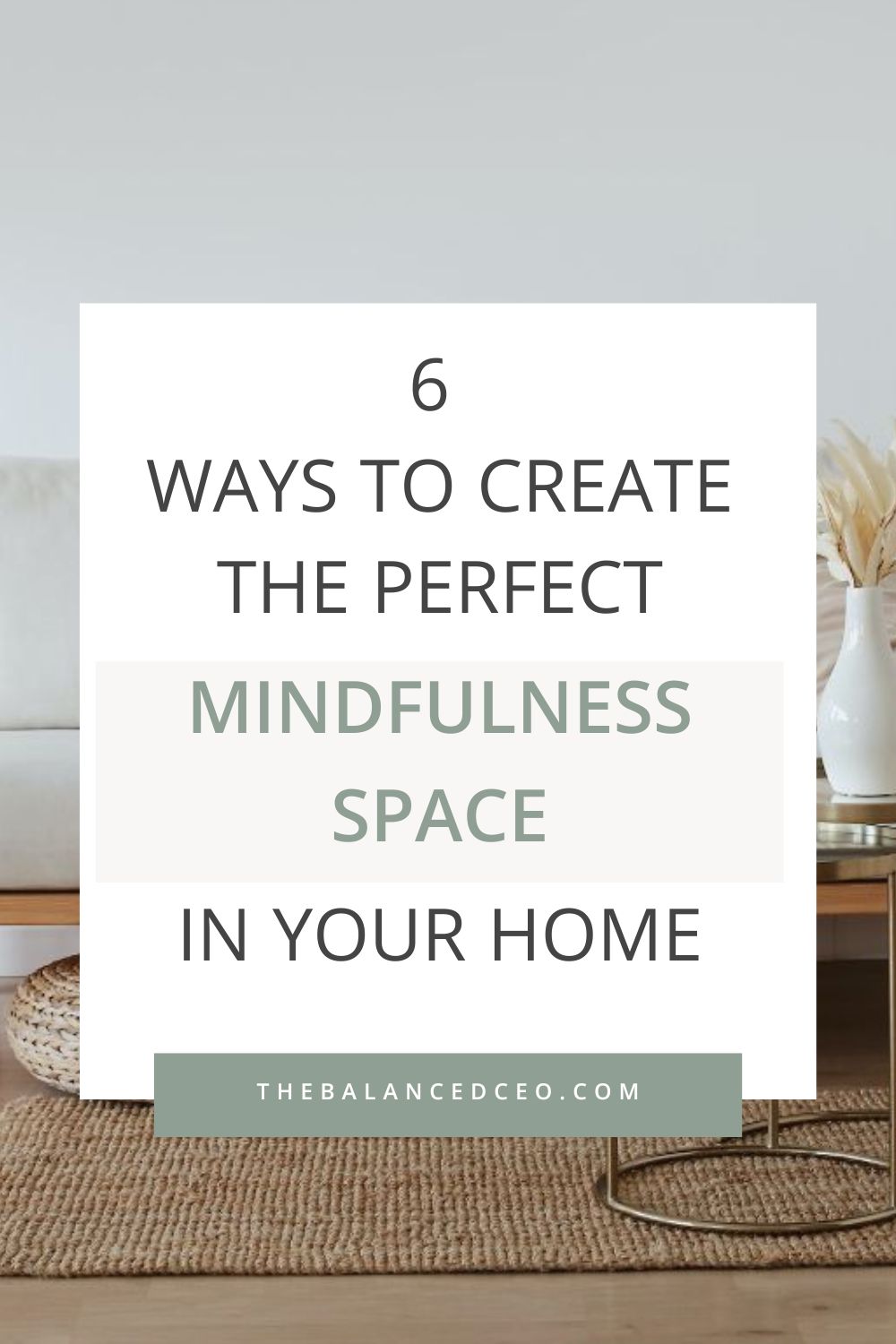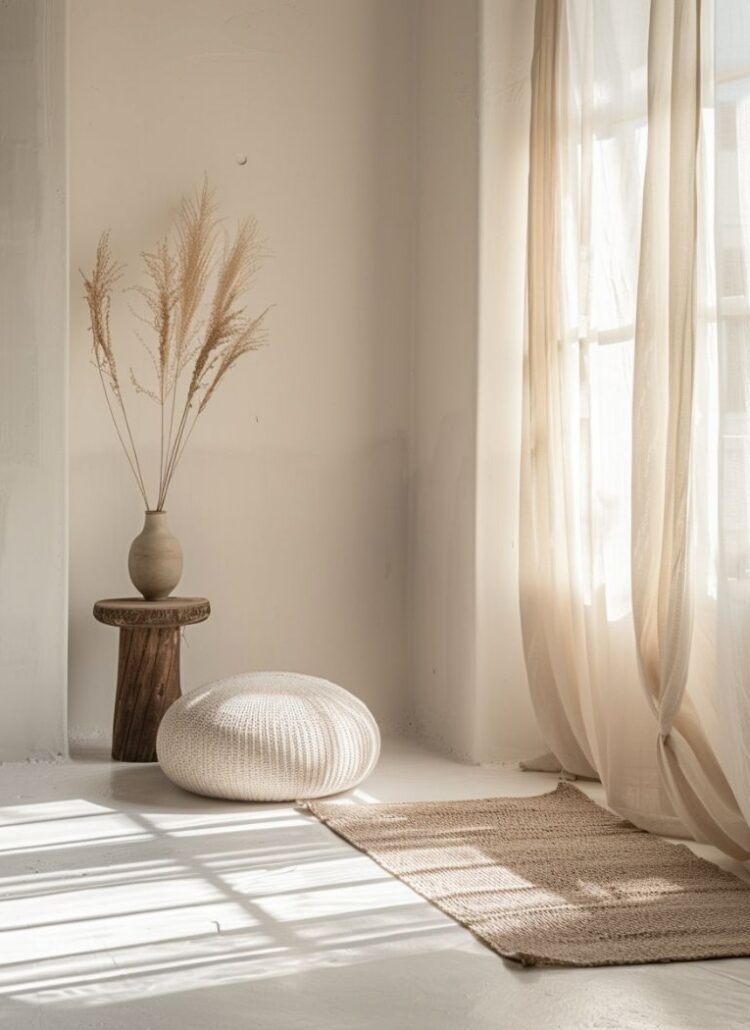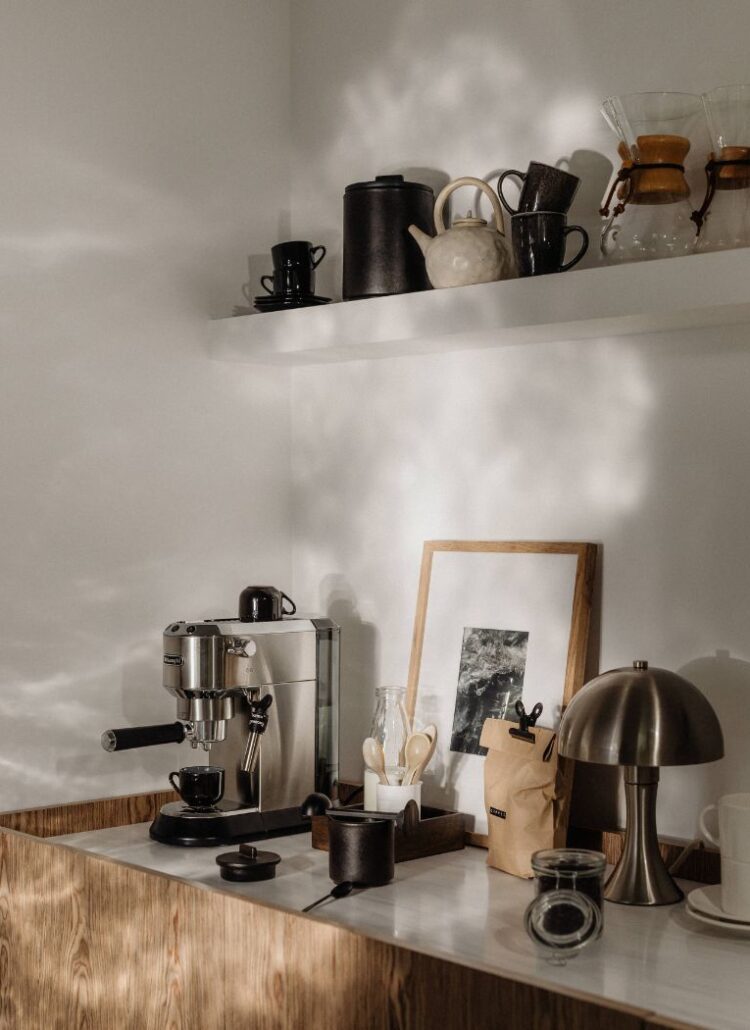This post may contain affiliate links, which means I’ll receive a commission if you purchase through my links, at no extra cost to you. Please read full disclosure for more information.

Creating the perfect mindfulness space in your home impacts other areas of your life. Daily practice keeps you mentally and physically healthier, preparing you to handle the stress of living.
Your mindfulness space is also a haven, a retreat where you can get a grip anytime the pressure gets overwhelming. Honoring this need by creating an area for it is an act of nurturing self-care.
What should you include in your personal and spiritual rejuvenation center? Here are six tips for creating the perfect mindfulness space in your home.
1. Ensure Privacy
If you’re a single mom raising her baby in a studio, you might not have a door you can close. However, such areas already call for creative solutions, such as room dividers that provide the illusion of separate spaces. Many have the benefit of not blocking sound, meaning you can keep an ear open while your little one naps.
However, you should do your best to ensure privacy. Few things are more frustrating than being yanked from your meditative state by a horde of teenagers coming in from soccer practice. Here are some unique features you might consider, depending on your home’s configuration:
- Soundproofing: Simple objects like blankets and curtains can buffer noise. You could line your space with tapestries that speak to your spiritual side.
- A “do not disturb” sign: This might be whimsical or serious, depending on your personality.
- Physical barriers: Consider planting shrubs that keep prying eyes from your mat or zafu if creating an outdoor meditation space. Use a bookshelf, divider, or furniture to cordon off an area indoors.
2. Adjust the Lights
The right lighting can significantly enhance your home’s mindfulness space. For example, crystal chandeliers catch the sun’s rays, transforming them into gorgeous rainbows to brighten your room with the natural spectrum. If you have such a treasure, clean it carefully, avoiding harsh chemicals like ammonia that can degrade the quality of your fixture.
Opt for natural light whenever possible, even taking your mindfulness space outside if you live in a mild climate where harsh winters won’t prevent use. Your second-best bet is soft LEDs in amber tones. Warmer light tends to calm and relax you, unlike harsh blue tones that keep you awake — crucial if you meditate or practice yoga before bedtime.
Are you creative? LEDs open up a world of color possibilities. Imagine meditating in a rose-tinted room, which is possible with the right bulb.
3. Add Music
Music, like mindfulness, has curative properties that soothe your central nervous system. Furthermore, you might appreciate background sound if you practice yoga in your space. A world of Bluetooth speakers on the market links to your phone, letting you enjoy tunes anywhere, even wirelessly.
Your playlist can consist of anything that soothes your soul. However, consider experimenting with these musical healing tones if you want something new.
- Solfeggio frequencies: Solfeggio frequencies are based on tones used by ancient mystics. They’re said to harmonize with your cell’s electrons to bring on healing.
- Binaural beats: Binaural beats are a perception of sound created by your mind from simultaneously playing two different frequencies. Your mind invents a third tone that is said to alter your brain waves and spur relaxation.
4. Include Fragrance
Have you ever noticed your blood pressure drop by several milliliters of mercury when you enter a day spa? You don’t need to receive a treatment to benefit from the essential oils such healing centers generally use to lightly scent their indoor air.
The right aromas can spur healing. Aromatherapy works by activating scent receptors in your nose that travel to your brain, giving it various directions. For example, scents such as eucalyptus and lemon boost immunity by relaxing sore, tight muscles and prompting your body to fight germs.
What are some scents you might consider? Give these essential oils a try or blend them into a signature fragrance:
- Frankincense: This scent is good for muscle soreness and achy, arthritic joints.
- Rose: Often associated with love, this fragrance also promotes a sense of calm alertness.
- Lavender: Perhaps no scent has greater relaxing properties, thanks to the linalool in the essential oil.
5. Room to Move
You don’t have to practice yoga to embrace mindfulness — but it helps. Physical exercise reduces some of the stress hormones that make it challenging to enter a quiet, relaxed, and contemplative state. It mimics the body’s fight or flight response, and your hormones don’t know if you’re flowing through an asana or fleeing a lion. They react accordingly either way.
Therefore, give yourself room to spread out a mat. You should have ample space on either side to go through a full range of motion without running into walls or furniture or bruising yourself.
6. Comfort Reigns Supreme
Your comfort determines how often you’ll use the mindfulness space you create in your home, so make it cozy! For example, many people find a zafu perfect for meditation, but folks with mobility challenges might have trouble sitting on the floor with their knees bent. A comfy lounge might be a bit unconventional, but if it helps you meditate, relocate that La-Z-Boy to your meditation corner.
Personalization reigns supreme. If you follow a religious faith, your home mindfulness space is the ideal place to create your altar or add images or worship space particular to your belief system. What if you’re an atheist? What inspires you the most? You might line the walls with photos of gorgeous natural spaces or the people you hold nearest and dearest.
7. Harnessing Natural Energy
Consider integrating natural energy sources like home solar power into your mindfulness space to promote sustainability and reduce your carbon footprint. Embracing renewable energy aligns with mindfulness’s ethos and fosters a deeper connection with the environment around you. By incorporating solar panels or solar-powered devices, you not only enhance the eco-friendliness of your space but also infuse it with a sense of harmony with nature. Whether charging your Bluetooth speaker or illuminating your sanctuary with solar-powered LED lights, tapping into solar energy can elevate your mindfulness practice while contributing to a greener planet.
Creating the Perfect Mindfulness Space in Your Home
Practicing mindfulness improves your mental and physical health, but first, you must create a place for it in your home. Use these six tips to create an area that makes you want to turn inward, relax, and contemplate what’s meaningful to you.

Ava Roman
Contributor
Ava Roman is a mom, a yogi, and currently a Managing Editor of a women’s lifestyle website. She believes work/life balance is achievable once you learn to set and stick to firm boundaries. You can find more from Ava on her website, Revivalist.





Leave a Reply